Brazilian coffee bean varieties main producing areas Brazilian sun treatment of bourbon coffee bean flavor hand-flavored suggestion
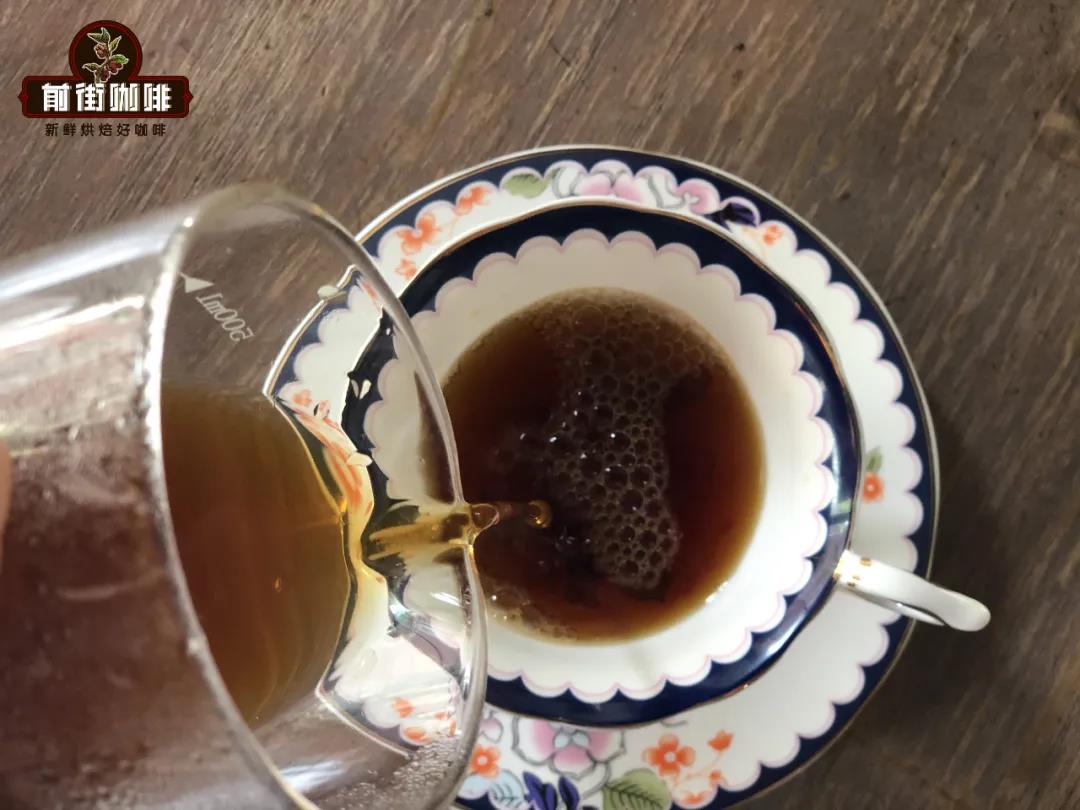
Professional coffee knowledge exchange more coffee bean information please follow the coffee workshop (Wechat official account cafe_style)
I don't know at what stage does everyone's understanding of Brazilian coffee beans stay? The infamous "Rio Bean" is the world's largest coffee producer and one of the founders of the COE Excellence Cup. These are undoubtedly the history of the development of Brazilian coffee. What is the impression of today's Brazilian coffee? Qianjie Coffee will be expressed in several articles about Brazilian coffee.
History of Coffee cultivation in Brazil
Brazil is located in the Latin American region of the Western Hemisphere, located in the eastern part of South America and on the west coast of the Atlantic Ocean, bordering all countries on the South American continent except Ecuador and Chile; most of its territory lies between the equator and the Tropic of Cancer. It is the most tropical country in the world. The territory has a tropical rain forest climate and a tropical prairie climate. The superior tropical natural conditions are very suitable for the growth and production of tropical cash crop coffee.
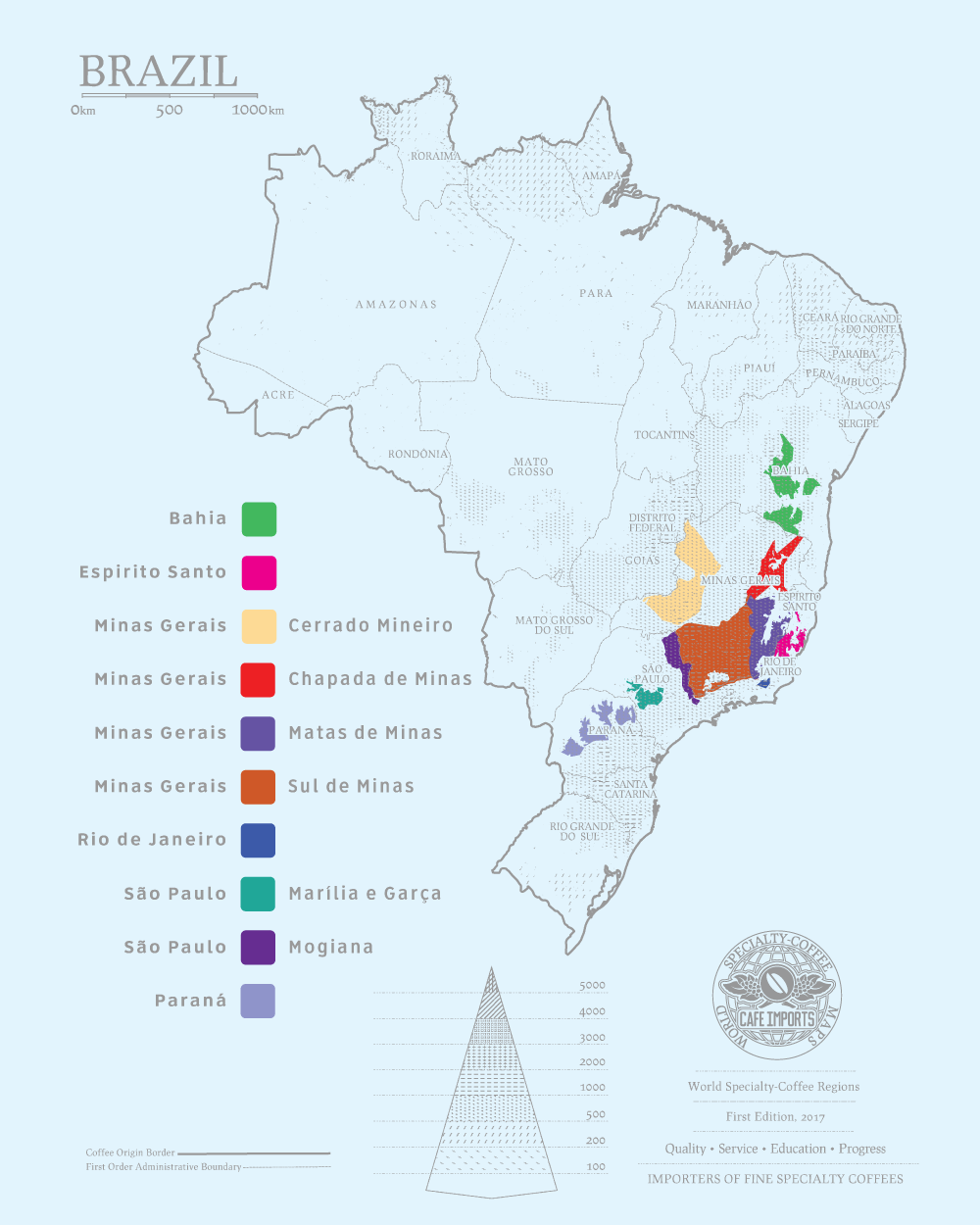
Brazilian coffee was introduced to Brazil from French Guiana in the 1720s. Francesco Paletta, a Portuguese captain from Brazil, captured the heart of the then governor's wife in Cayenne, the capital of French Guinea, and successfully brought coffee seeds to Brazil. Since then, coffee has adapted quickly in Brazil, spreading from the north to the southeastern state of Sao Paulo and the southern province of Parana, where it is at slightly higher latitudes and Frosts Descent in winter, resulting in heavy losses to farmers.
From 1970 to 1980, Brazilian farmers developed the warmer provinces of Minas and Bahia in the northern state of Sao Paulo, which are less warm in winter than Frosts Descent until today Minas has become one of the main producing areas of Brazilian boutique coffee.
Before 1990, the Brazilian government carried out strict monitoring of the coffee industry, with both strict intervention and price protection measures, and the state has been implementing minimum price protection measures for farmers, resulting in coffee overproduction.
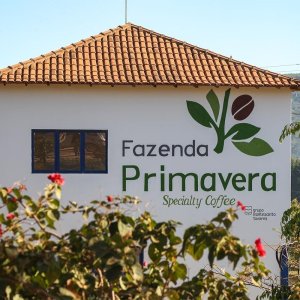
Since the opening of the free market in 1990, the original Brazilian Coffee Authority (IBC) has been replaced by the National Economic Association, the country's non-investment administrative body, which pursues a policy of non-intervention and allows producers to negotiate directly with exporters. The business activities of exporters are supervised by the government legislation, and the relevant departments register legitimate exporters. Since 300 years ago, coffee has become the main source of economy in Brazil, and Brazil has also become the largest producer of coffee in the world.
What are the varieties of coffee in Brazil?
Brazil is the main force of American coffee, and many varieties of coffee are radiated to Latin American countries through Brazil. Among them are the familiar tin card, bourbon, Kaddura, Kaduai, New World and so on.
Iron pickup: iron pickup can be said to be the oldest coffee variety in the world. There is no doubt about its flavor and quality, but it has the disadvantages of low yield and poor disease resistance. Brazil first began to grow iron pickup coffee in the 18th century, and it is also one of the first areas in the Americas to grow coffee. However, due to its low yield, the bourbon species with slightly higher yield was later replanted in the 19th century. now, there are few iron cards left in Brazil, so it is difficult to produce.
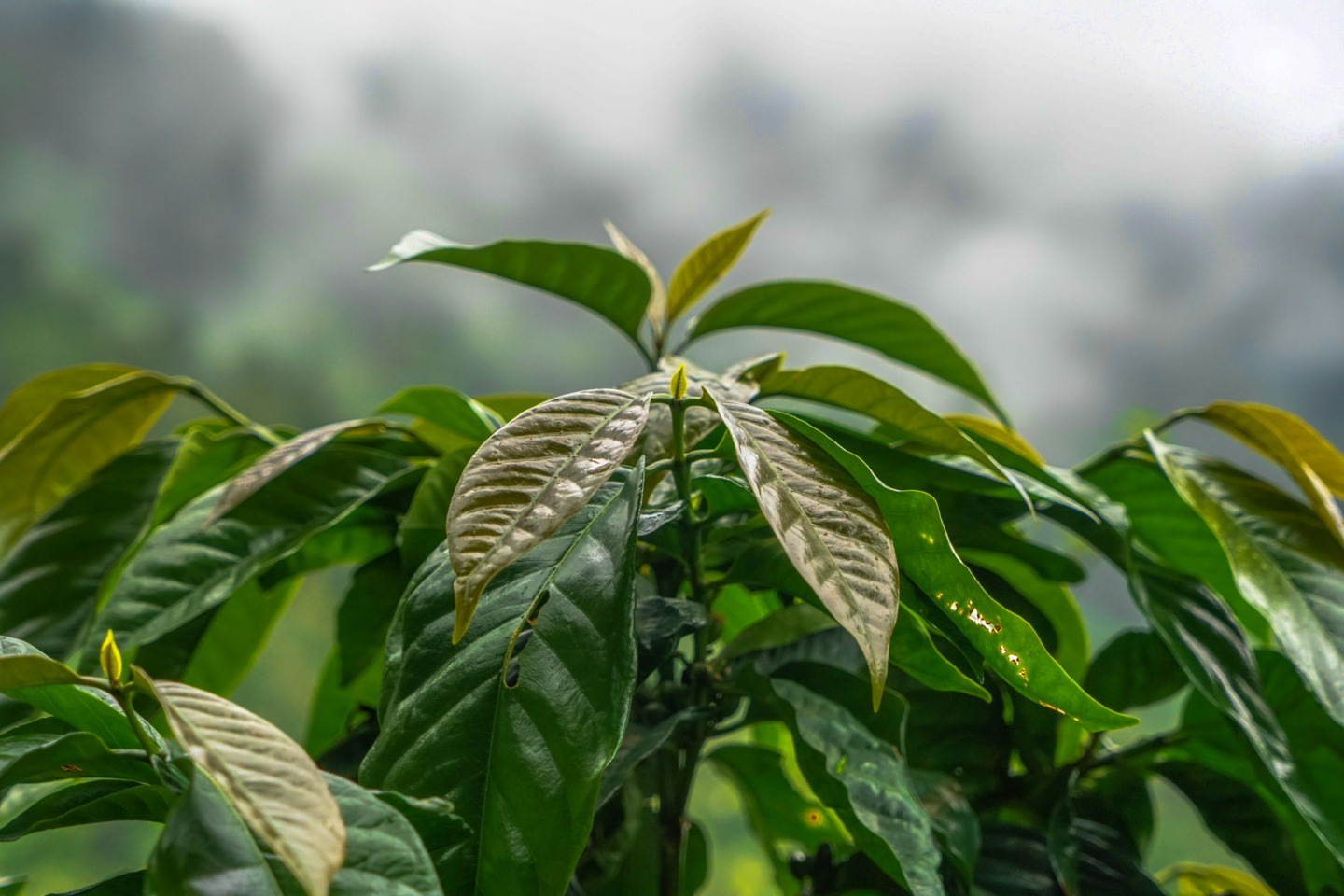
Bourbon: bourbon is the second major category of coffee in Brazil, mainly to replace the low-yield tin card, but its overall output is only 30% higher than that of tin card.
Normal bourbon coffee is red when it is ripe, while yellow bourbon fruit is yellow instead of red like regular coffee fruit. It was first discovered in Brazil in 1930 and is now mainly grown in Brazil. It is generally believed that it may have been mutated by a cross between a bourbon with red fruit and a variety of iron pickup with yellow fruit called "Amerelo de Botocatu" (discovered in Sao Paulo in 1871). Because of its low yield and relatively intolerant to wind and rain, it has not been widely planted. However, when planted in high altitude areas, it will have excellent flavor performance, which is more common in recent years.

Kaddura: Kaddura is a natural variety of bourbon. It was found on a plantation in the Brazilian state of Minas Gerais between 1915 and 1918. There is a mutation in a group of genes in bourbon planted in the plantation, causing plants to grow smaller (similar to dwarfism). This new kind of coffee, which is expressed in a new biological form, is called "Caturra" in Guarani by locals, which means "small". It is sometimes called "Nanico".
Screening began in 1937 at the Agricultural College of the State of Sao Paulo (IAC) in Campinas, Brazil. Kaddura's selection process is called group selection, which means that a group of individuals are selected according to their excellent performance, and the seeds of these plants are piled up to form a new generation, and then the process is repeated. But what is interesting is that this variety has never been officially released in Brazil, but it is already very common in Central America.
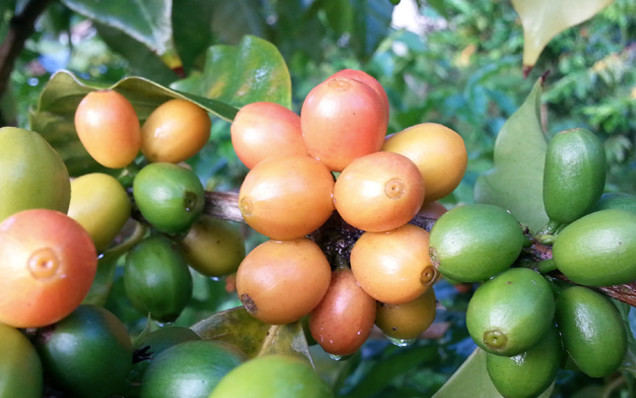
New World: new World (Mundo Novo) is the result of a natural cross between Bourbon and Sumatra Iron pickup, first discovered in 1943 in Teteminelos, Sao Paulo, Brazil. The new world was originally planted in the new world market (Novo Mundo), which is now Uruppez.
The first selection of Brazilian New World coffee beans was completed between 1943 and 1952. This variety has been distributed to coffee growers since 1952. The New World was widely cultivated in Brazil in the 1860s and was hailed as the new hope of the Brazilian coffee industry. Later, in 1977, the Institute of Agronomy IAC (Agronomical Institute of Campinas) released a new selection. In Brazil and other South American countries, the New World variety has very high commercial value. The New World has also spread to other countries, but it has not been widely planted locally for a variety of reasons. The new world coffee plant is tall, the leaf tip is green or brown, and the overall bean shape of Brazilian coffee beans is round and the particles are larger.
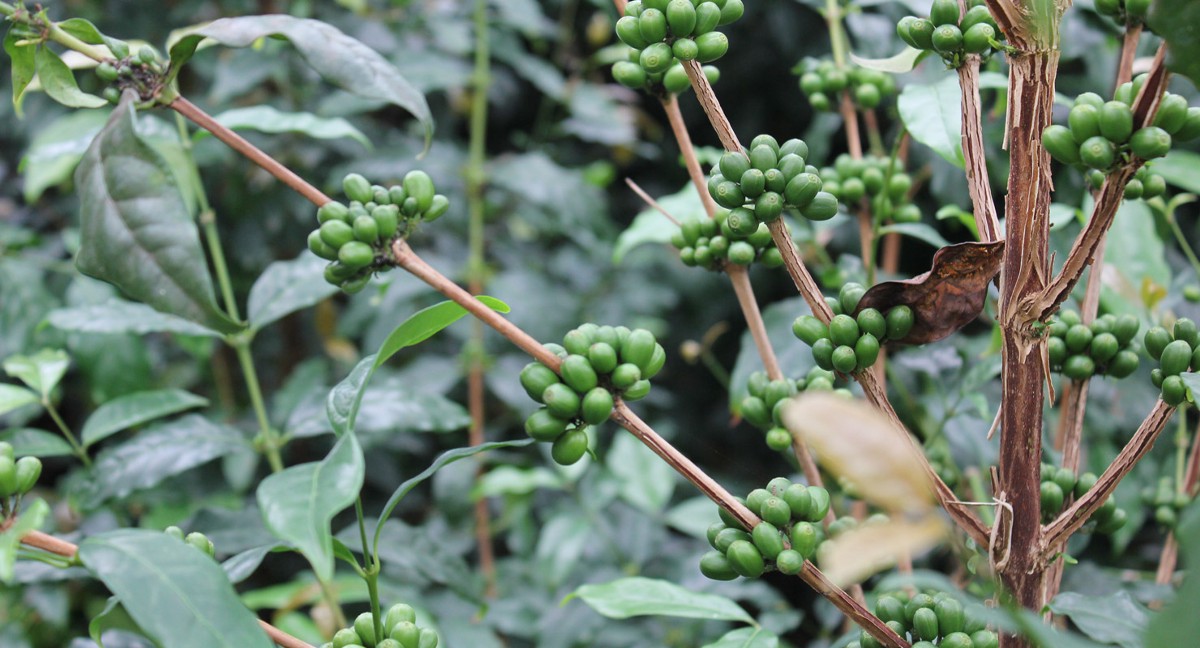
Kaduai: Kaduai, you can tell from the name that it has a lot to do with Kaddura. It was artificially bred by the Institute of Agriculture of the State of Sao Paulo (IAC) in Campinas, Brazil, using a hybrid of New World (Mundo Novo) and Huangkadura (Yellow Caturra), originally known as "Hmer 2077". The New World is the result of a natural cross between Bourbon and Typica, which was first discovered in 1943 in Titeminelos, Sao Paulo, Brazil.
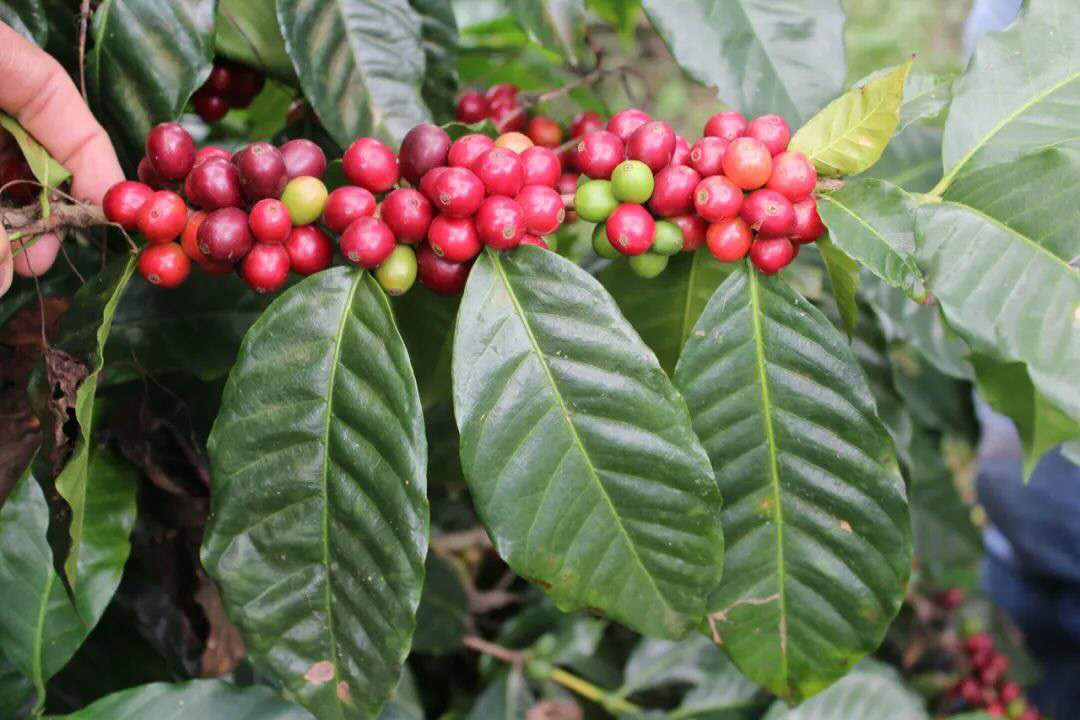
Kaduai inherits the attributes of high yield, strong disease resistance and good cup-tested varieties in the New World, and inherits the attributes of Kaddura's small size, high-quality sour and exposed coffee. Therefore, Kaduai has a good ability to resist disasters, especially wind and rain. Because the plant is small, it can be planted at twice the density, and the plant is small, so it is relatively easy to treat diseases and insect pests. Kaduai is strong and low in height, but is vulnerable to leaf rust.
And because this kind of coffee is so excellent, it is named Catuai, which means "very good" in Guaran í. However, the variety originally known as "Hmur2077" did not perform very well in cup test, only in disease resistance, insect resistance, yield, adaptability of growth environment and so on.
Elephant bean: elephant bean, the scientific name is Maragogype. As a result of the first discovery in 1870 in the Marago Rippi producing area in the Brazilian state of Bahia, Marrago Rippi was also used as this abnormal coffee bean species. Through the comparison of biological morphology and gene detection, it is concluded that elephant bean is a natural variety of iron pickup. Its coffee bean body is three times the size of the average Arabica bean.
In addition to the size of beans, the trunk, branches and leaves of elephant beans are also larger than those of ordinary coffee varieties, so they need more space, nutrients and resources than ordinary coffee varieties. In addition, it is difficult to take care of and harvest, and the time cost is high (fruit ripening period is long, hanging fruit for 5 years), so few farmers go to plant it. At present, a few are distributed in Brazil, Nicaragua, Mexico, Guatemala and other Latin American countries. In Brazil, because of its high breeding cost, only a small amount exists, which is difficult to become a climate.
Qianjie Coffee Brazil Red bourbon
Country: Brazil
Producing area: South Minas
Altitude: 1000 m
Variety: red bourbon
Treatment: half-sun
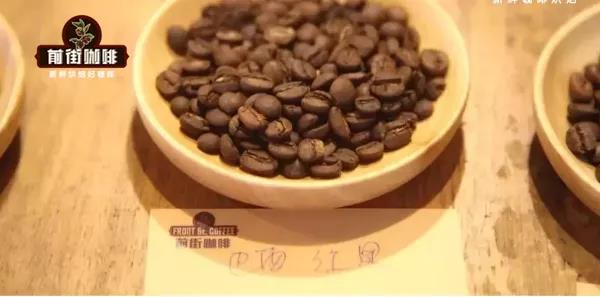
The Brazilian coffee beans on the front street come from the state of Minas Gerais. The representative coffee producing areas of Minas Gerais are Syrador and South Minas, both of which are at higher elevations. Hirado is located in the west of Minas Gerais, a flat plateau at 750m-1200m above sea level. South Minas is a hilly woodland in 700m-1200m above sea level. Since 1999, South Minas has won the most manors in Brazil's Outstanding Cup bidding.
Half-sun coffee treatment invented in Brazil
Before 1990, almost all of Brazil adopted rough sun treatment, which made Brazilian beans easy to catch the smell of rotten wood or soil, because coffee fruits go through a two-to three-week exposure process, and when it rains and returns to tide, it is easy to produce mildew. In order to change this situation, Brazil strictly rejected Brazil's relatively dry climate in 1990 and developed half-sun tanning (Pulped Natural) to shorten the processing time.
Half-sun treatment, in fact, can also be called semi-washing treatment, its essence is the combination of sun and water washing, Brazil is short of water resources, the flood season is uncertain, the use of full-water washing can not ensure adequate water supply, full-sun drying can not guarantee its climate dry for a long time. Therefore, taking advantage of its natural advantages, half-sun treatment is created, which greatly reduces water consumption and drying time, and reverses the quality of coffee produced in Brazil for two hundred years.
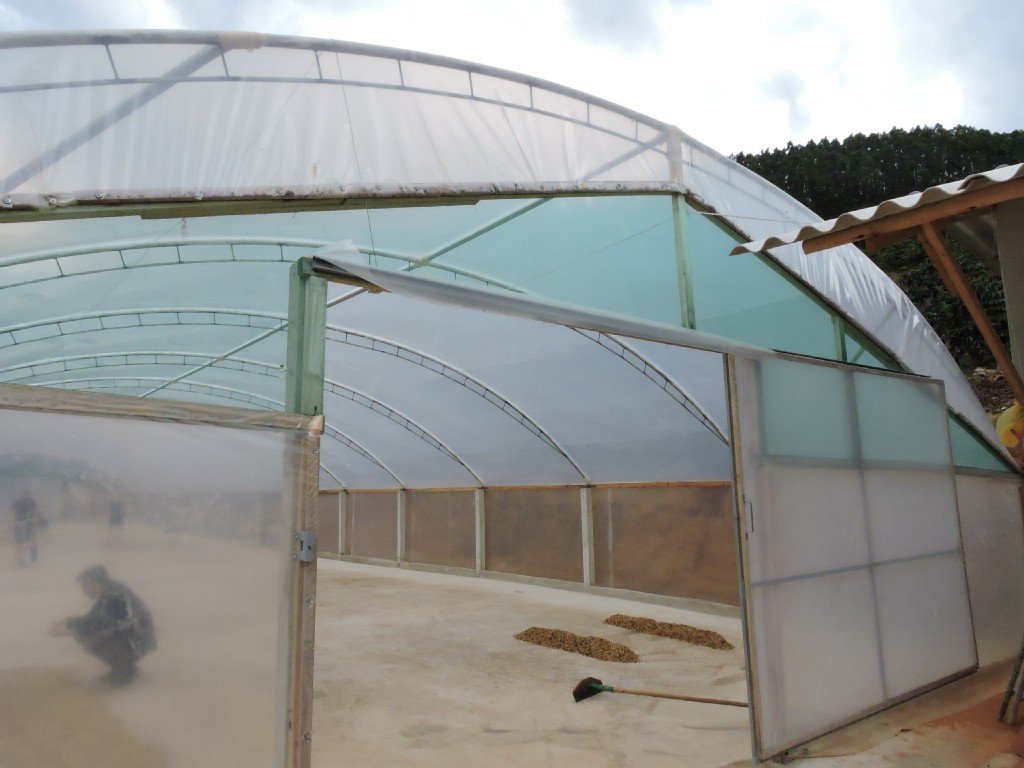
Roasting Analysis of Qianjie Coffee
Brazilian coffee generally grows at an altitude of 1000-1300 meters above sea level, so its density is relatively low, the water content is moderate, the bean quality is soft, and the thickness from the bean surface to the bean core is thin, so it is not suitable for baking at too high temperature, so there will be a bitter taste. We choose the method of throwing beans over medium heat to keep the firepower to the dehydration stage, and fine-tune the caramelization reaction with the increase of temperature after the first explosion, which makes the caramelization reaction more fuller. After the semi-water washing and explosion, the temperature rises slowly, and the beans can be dropped when the second explosion is near.
The furnace temperature is preheated to 200 degrees Celsius, fire is fired after the throttle is set at 3J30s, the firepower is adjusted to 160, the throttle is unchanged, the temperature recovery point is 30, keep the firepower, the grass smell disappears, the firepower is reduced to 130, and the throttle is opened to 4. At 168 degrees, the firepower was lowered again to 100.8 degrees 39. 00 after dehydration, the bean surface appeared wrinkles and black markings, and the taste of toast changed to coffee, which was a prelude to an explosion. At 8: 00, 39: 00, 50 starts to explode, and all the throttle doors are open. After an explosion, the development time is 3 minutes and 10 seconds, and when it reaches 190C, the firepower drops to 50194 degrees, then to 30 degrees, and then to about 200degrees.
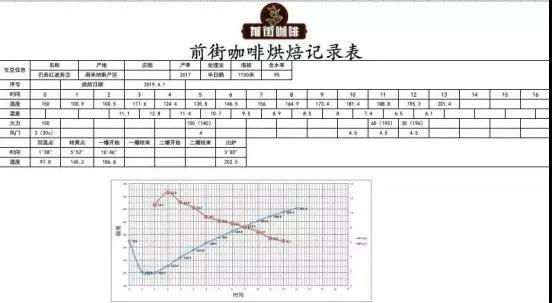
Suggestion on brewing coffee in Qianjie
Powder content: 15g
Water temperature: 90 ℃
Degree of grinding: medium grinding, 20 standard screen pass rate 70%
Gouache ratio: 1:15
The front street uses segmented extraction, the amount of steaming water is twice that of coffee powder, that is, 30 grams of water is steamed for 30 seconds, the small flow is injected around to 125 grams, and the water level is about to be exposed when the powder bed is about to be exposed, continue to inject water to 225 grams to stop, the whole extraction time is 2 minutes.
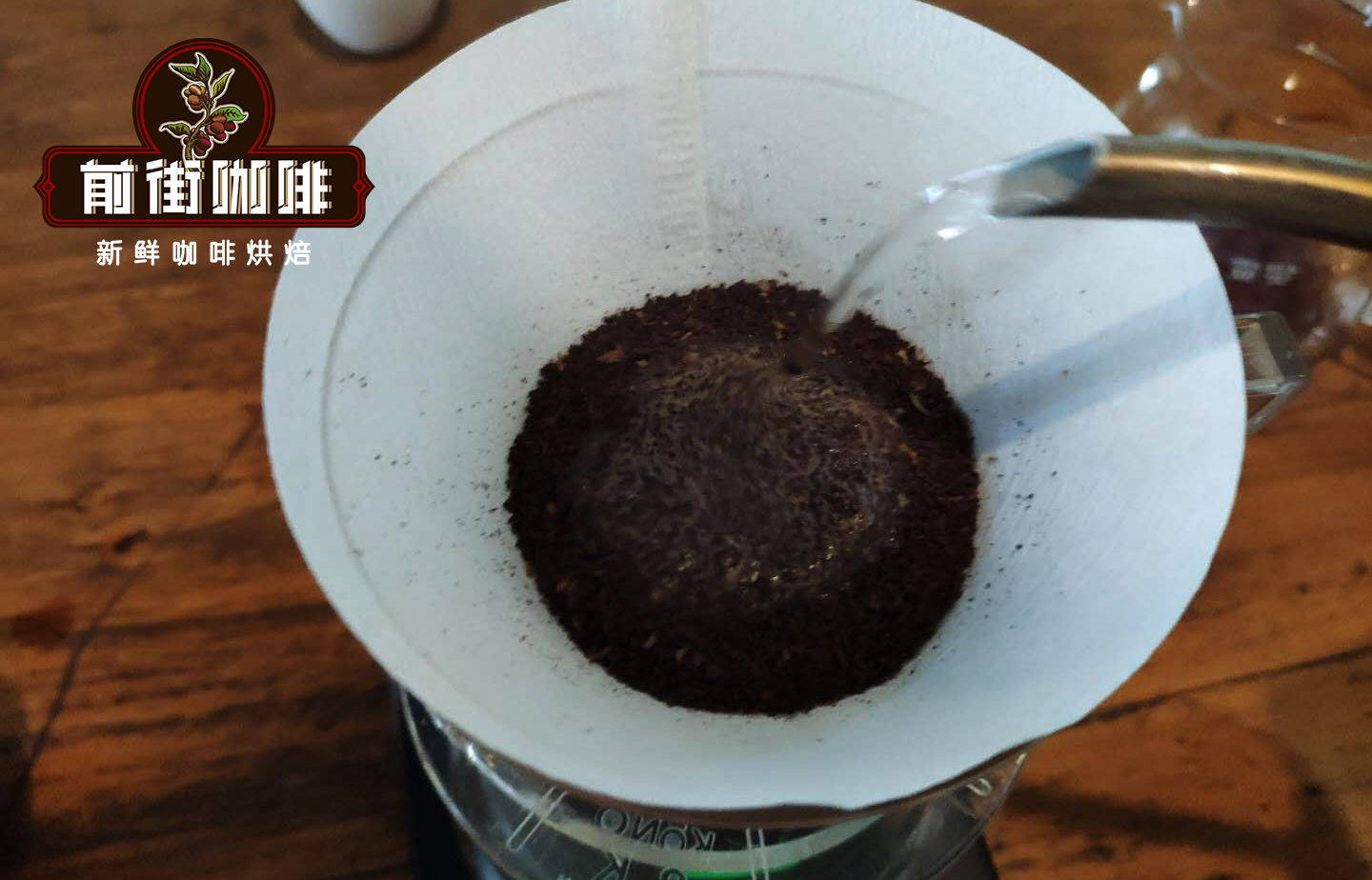
Cooking flavor: high sweetness, clean, supple, low acid value, peanut, almond, nut, chocolate flavor.
Qianjie Coffee Queen Manor of Brazil
Producing area: Mojiana producing area, Brazil
Manor: Queen's Manor
Altitude: 1400-1950m
Variety: yellow bourbon
Treatment method: sun treatment
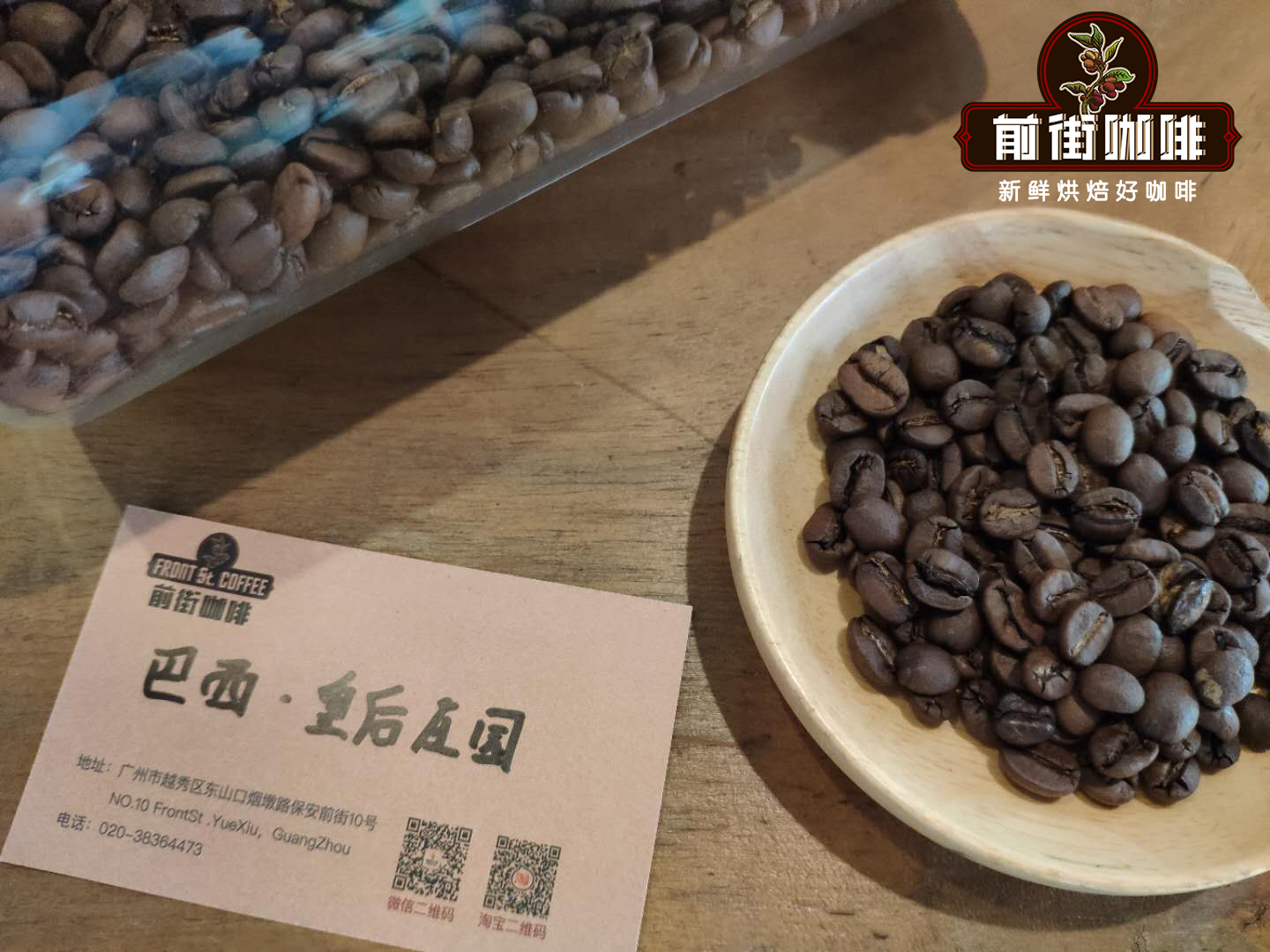
The area of Morgiana Mogiana is very close to the south of Minas. Coffee is grown between shrubs, grasslands and other vegetation. There are many farming families in this area, some of which operate in the traditional way of large farms, while others operate in a small-scale and modern way. Modern science and technology mixed with mountain coffee cultivation culture has created the highest quality raw coffee beans. Through the cup test in Qianjie, it is found that the coffee beans produced in this area are as sweet as sugar.
Exquisite sun treatment of manor
Unlike the large-scale harvest treatment in Brazil, the Queen's Manor uses exquisite sun treatment to solve the problem of quality decline caused by large-scale centralized treatment in Brazil. At the picking level, semi-mechanical harvesting is adopted, which not only ensures the efficiency, but also improves the harvesting quality. After the harvest, the second flotation was carried out to screen the qualified coffee fruits into the high bed in the sun, during which the drying degree was detected manually and the defective fruits were removed. When dried to 12% with tax rate, it is shelled and polished, and the sheepskin is kept in the warehouse.
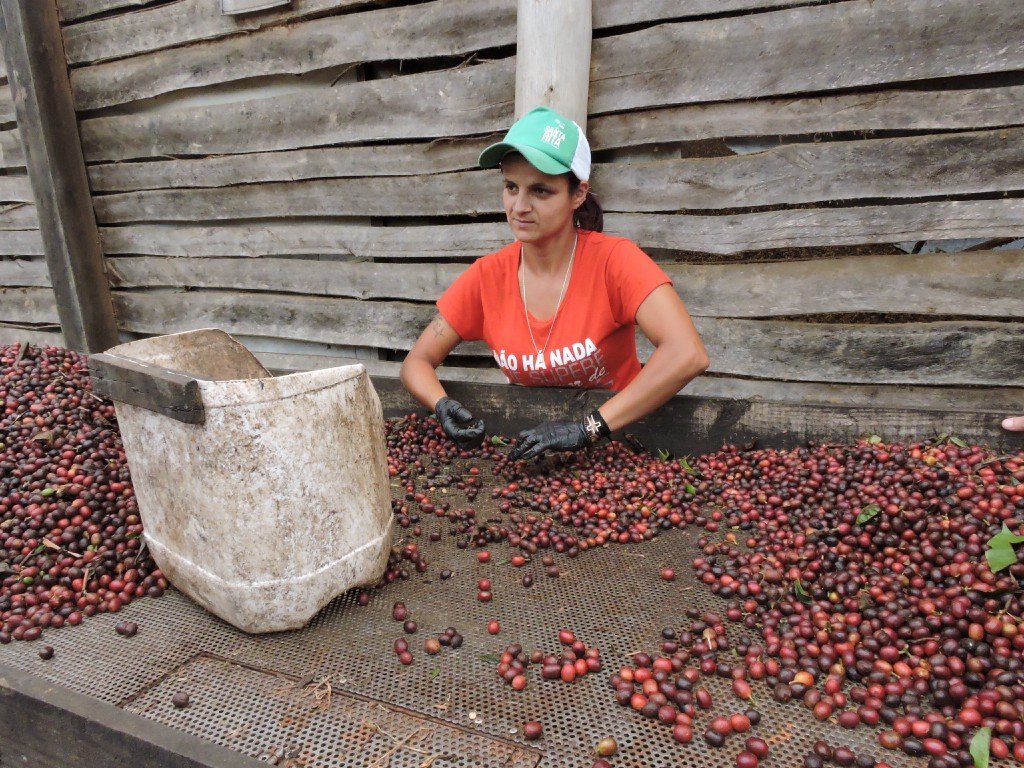
Roasting Analysis of Qianjie Coffee
It is also Brazilian coffee, but its average growth height will be higher, so the bean quality of coffee will be relatively hard.
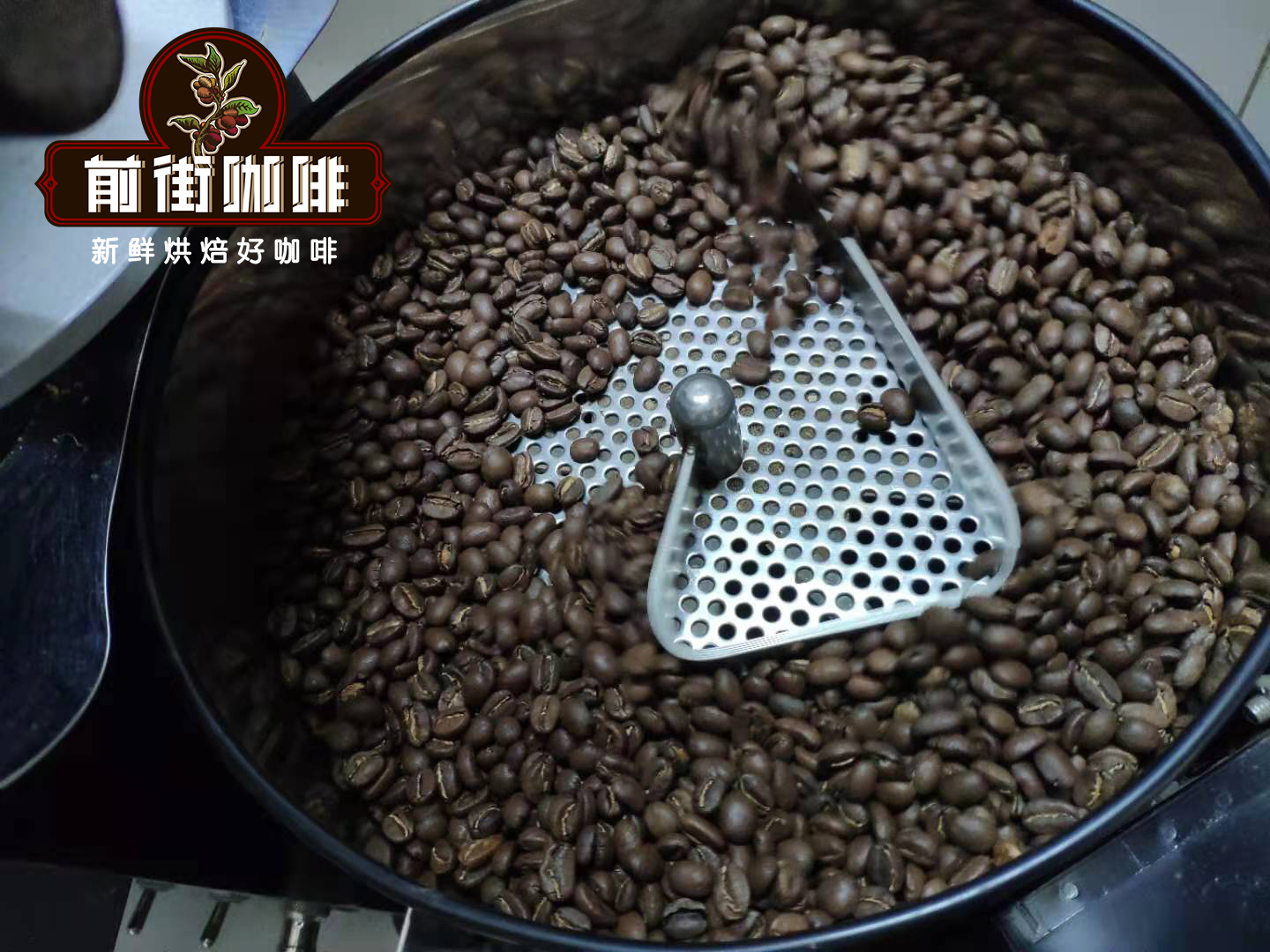
Brazilian yellow bourbon baking suggestion: Yangjia 800N, bean 550g: warm up to the facility 200 degrees into the pot, firepower adjustment 150, throttle open 3, temperature recovery point 1 "39", 30 ", maintain firepower, 5 minutes 39" 10 "turn yellow, grass smell disappears, enter the dehydration stage, firepower is reduced to 125, throttle is open to 3.5. After dehydration, the bean surface appeared wrinkles and black markings, and the taste of toast changed to coffee, which was a prelude to an explosion. When the firepower dropped to 80 at 178 degrees Celsius, you should pay attention to the sound of an explosion. When 9 degrees 39, 14 "began to explode, the throttle door was fully open. After an explosion, the development time is 390 degrees 3900 minutes. 201 degrees.
Suggestion on brewing coffee in Qianjie
Filter cup: V6001filter cup
Powder content: 15g
Water temperature: 90 ℃
Degree of grinding: medium grinding, 20 standard screen pass rate 70%
Gouache ratio: 1:15
Use the front street three-stage cooking. First preheat the filter cup and the sharing pot. Pour in 15 grams of coffee powder and gently pat to make the coffee powder surface smooth. Start the first stage of water injection and inject 30 grams of water into the circle for 30 seconds. Ideally, the coffee powder is evenly watered, bulging an inflated "coffee burger".
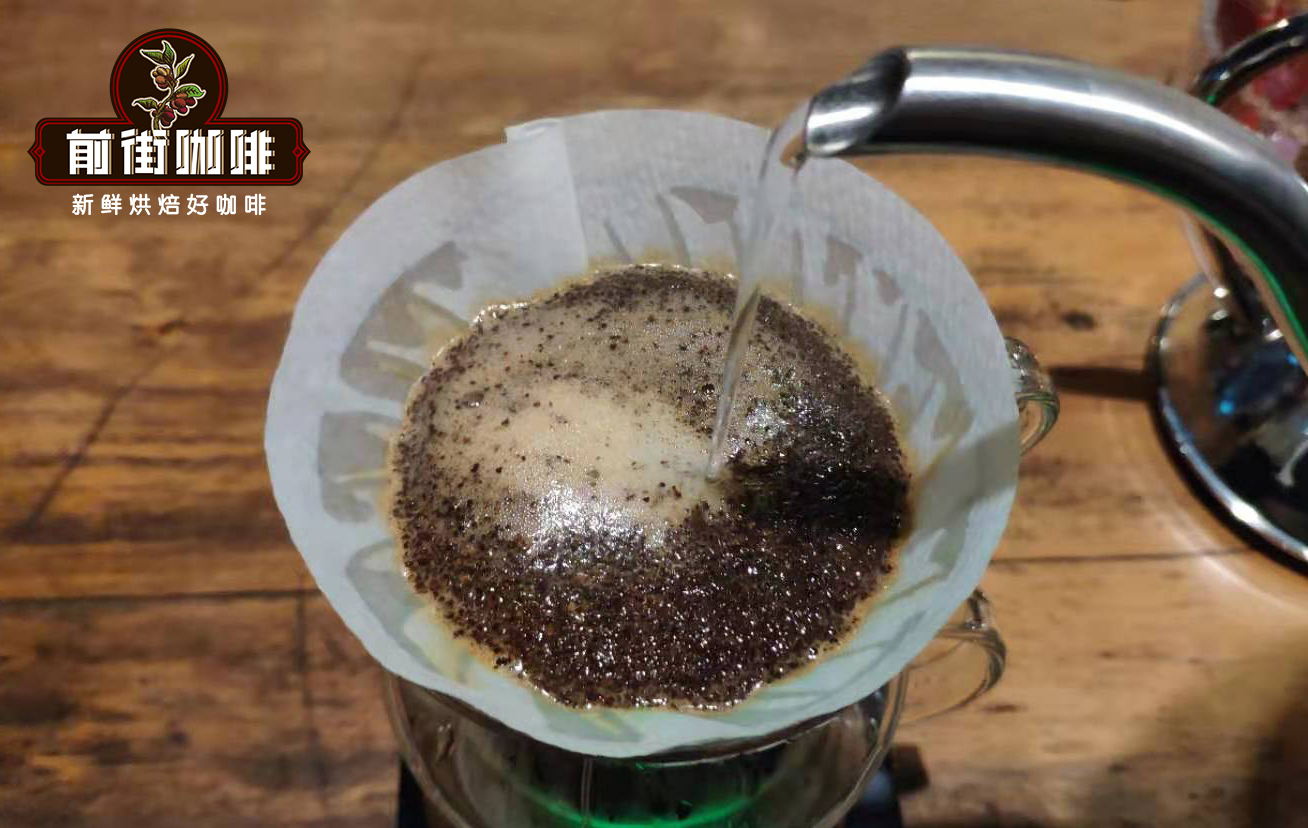
The second stage is injected 30 seconds later, the height of the water column is 3-5cm, and the center is injected 95 grams of water around the concentric circle. The total amount of water injection is 125g. Observe that the coffee liquid level should be all golden coffee foam. When the powder bed is about to be exposed, start the last stage of water injection, this section of water injection 100 grams, slowly draw a circle around the concentric circle, the flow is consistent. When all the coffee liquid from the filter cup flows into the next pot, remove the filter cup and end the extraction. The total duration is 2 minutes 05 seconds.
Flavor: taste balanced, in the main tone of almond cocoa, highlight the sweetness of sugar, is a good fullness, sweet coffee.
For more boutique coffee beans, please add private Qianjie coffee on Wechat. WeChat account: kaixinguoguo0925
Important Notice :
前街咖啡 FrontStreet Coffee has moved to new addredd:
FrontStreet Coffee Address: 315,Donghua East Road,GuangZhou
Tel:020 38364473
- Prev
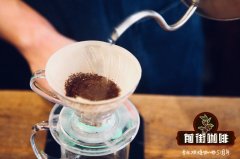
The mystery of the variety of Brazilian coffee beans is Brazilian coffee beans a small seed?
Professional coffee knowledge exchange more coffee bean information Please pay attention to Coffee Workshop (Wechat official account cafe_style) Coffee originated in Ethiopia, the great navigation era was brought to the world by the colonists, and gradually become the most popular drink in the world. With Skyscanner, let's take a look at the main producing areas of coffee beans and the types of individual coffee. Coffee brings about all over the world.
- Next
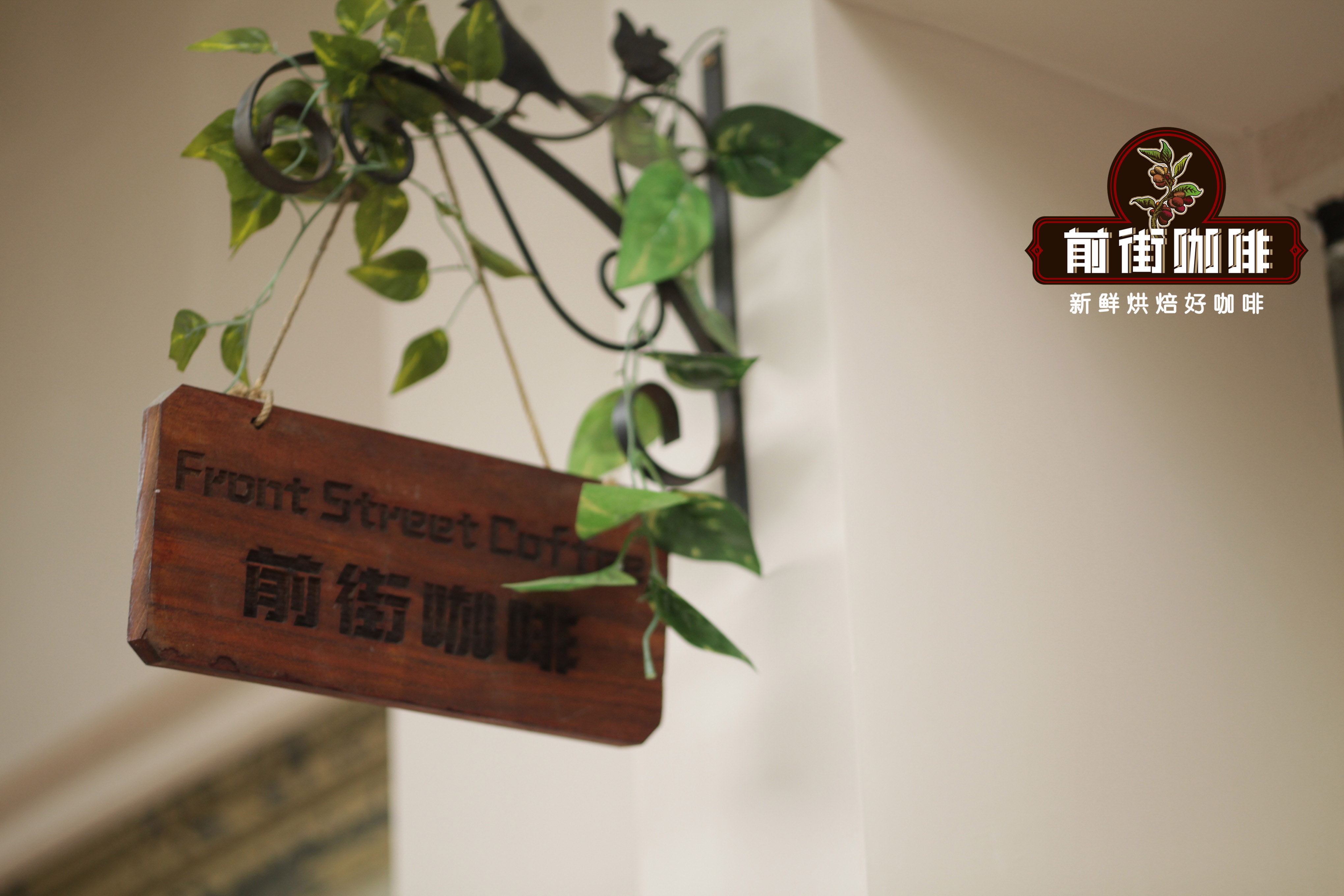
Brazilian coffee bean hand brewing suggestion how to make Brazilian coffee hand brew is good to drink individual coffee
Professional coffee knowledge exchange more coffee bean information please follow Coffee Workshop (Wechat official account cafe_style) this demonstration Brazilian coffee bean is 100% yellow wave, its provenance can be traced back to Reunion Island, Madagascar, where this species originated. In the 18th century, French explorers brought coffee here for the first time, so this variety is also called French missionary.
Related
- Detailed explanation of Jadeite planting Land in Panamanian Jadeite Manor introduction to the grading system of Jadeite competitive bidding, Red bid, Green bid and Rose Summer
- Story of Coffee planting in Brenka region of Costa Rica Stonehenge Manor anaerobic heavy honey treatment of flavor mouth
- What's on the barrel of Blue Mountain Coffee beans?
- Can American coffee also pull flowers? How to use hot American style to pull out a good-looking pattern?
- Can you make a cold extract with coffee beans? What is the right proportion for cold-extracted coffee formula?
- Indonesian PWN Gold Mandrine Coffee Origin Features Flavor How to Chong? Mandolin coffee is American.
- A brief introduction to the flavor characteristics of Brazilian yellow bourbon coffee beans
- What is the effect of different water quality on the flavor of cold-extracted coffee? What kind of water is best for brewing coffee?
- Why do you think of Rose Summer whenever you mention Panamanian coffee?
- Introduction to the characteristics of authentic blue mountain coffee bean producing areas? What is the CIB Coffee Authority in Jamaica?

